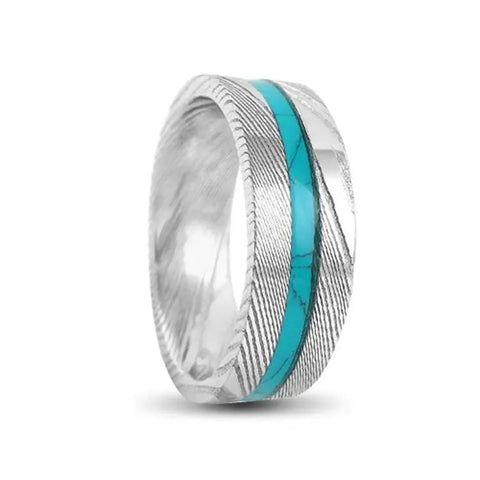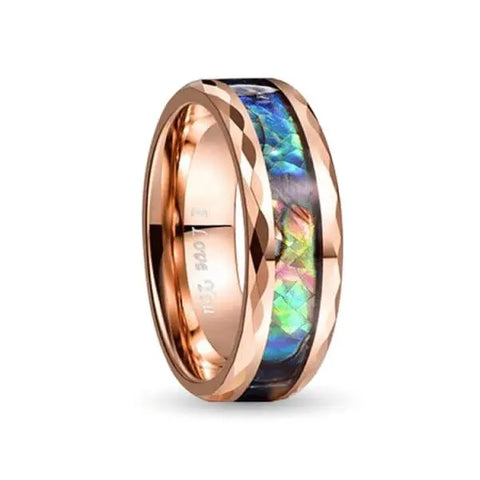A ring's inlay is the jewel that accents and adds detail to its center. The inlay can be made out of a precious stone, fossil, or even from a paperclip! This blog post will cover and examine each type of inlay according to its function as well as what materials are best for these functions.

What does a ring inlay do?
A ring inlay is a small piece of metal, stone, or other material that is set into the surface of a ring. Inlays can be used for a variety of purposes, from decorative to functional. The most common type of inlay is a gemstone, which can add color and beauty to a ring. Inlays can also be used to create interesting patterns or designs on the surface of a ring, or to add extra strength or durability to a ring.
Types of Inlays
There are many different types of inlays available on the market, each with their own unique benefits and drawbacks. Here, we'll explore some of the most popular types of inlays to help you make an informed decision about which one is right for your needs.
One of the most popular types of inlays is the metal inlay. Metal inlays are made from a variety of metals, including gold, silver, and even platinum. Metal inlays offer a number of benefits, including durability and resistance to wear and tear. However, metal inlays can be quite expensive, and they may not be suitable for all budgets.
Another popular type of inlay is the stone inlay. Stone inlays are made from a variety of natural stone materials, including granite, quartz, and marble. Stone inlays offer a unique look that can add a touch of luxury to any ring. However, stone inlays can be quite fragile and may require special care to maintain their beauty.
Finally, there are also synthetic inlays available on the market. Synthetic inlays are made from man-made materials, such as plastic or glass.

Material Options for Jewelry Inlays
There are a multitude of different materials that can be used for inlays, and each offers its own unique set of benefits. Some of the most popular materials used in jewelry making include:
Gold: Gold is a popular choice for inlays due to its durability and resistance to tarnishing. It is also a relatively soft metal, which makes it easy to work with.
Silver: Silver is another popular choice for inlays, particularly due to its affordability. Like gold, silver is also a relatively soft metal, making it easy to work with. However, it is not as resistant to tarnishing as gold.
Platinum: Platinum is a very durable metal, making it ideal for inlays. It is also hypoallergenic, making it a good choice for people with sensitive skin. However, platinum is a very expensive metal, which may make it out of reach for some people.
Palladium: Palladium is similar to platinum in terms of durability and resistance to tarnishing. However, it is more affordable than platinum, making it a more accessible option for many people.
Titanium: Titanium is an extremely durable metal, making it an ideal choice for inlays. It is also a great choice for those who suffer from allergies, since it is usually hypoallergenic.

Conclusion
Ring inlays are a great way to add more creativity and pizzazz to your jewelry designs. By using ring inlays, you can create intricate designs that would otherwise be impossible to create with traditional methods. Not only do ring inlays add value and complexity to your jewelry, but they can also help you showcase your creative personality.
















